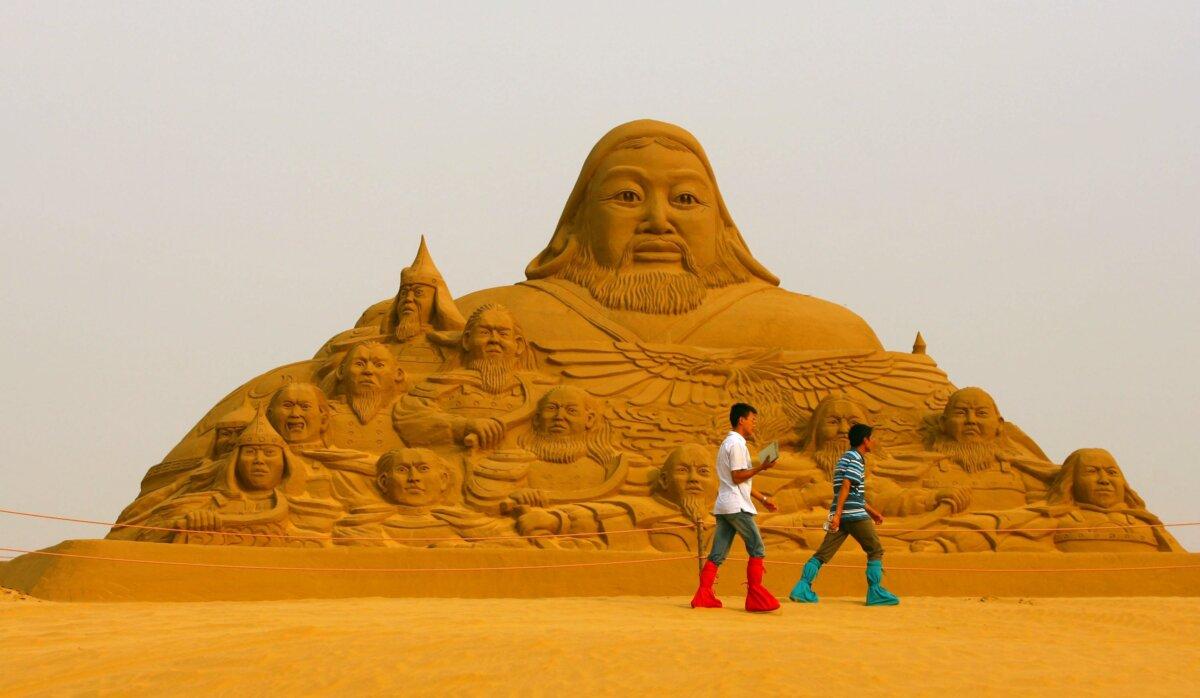The use of the Mongolian language for schools in China’s Inner Mongolia has been fully cut, following a three-year transition process. The move leaves many ethnic Mongolians concerned about the complete loss of their culture among younger generations.
“This is a systematic and planned policy of the Chinese Communist Party (CCP) government to eliminate the Mongolian nation,” said Enghebatu Togochog, a U.S.-based Mongolian activist, regarding the mandatory switch, which is being billed as “bilingual education.” Mr. Enghebatu is the director of the New York-based Southern Mongolian Human Rights Information Center (SMHRIC).
Mongolian activists outside of China often refer to their homeland as Southern Mongolia, rather than the Inner Mongolian Autonomous Region, as it is called by Beijing.
Starting from Sept.1, all Mongolian schools in the region, including kindergarten, must implement Mandarin exclusively, SMHRIC said on its website.
In April, the group said it had obtained an audio recording from a parent-teacher meeting in the Inner Mongolian capital of Hohhot. In the recording, the school principal informed parents that “under the directive from the Central Government, all Mongolian schools across the region will use the national common language [Chinese] as the language of instruction starting Sept. 1 this year.”
“Mongolian language is the last symbol of Mongolian national identity, but now the [CCP] government is [violating] language rights by not allowing Mongolian children to use their native language at schools,” Mr. Enghebatu told The Epoch Times on Sept. 16.
Early in August 2020, under the pretext of elementary school curriculum reform, Beijing pushed “second-generation bilingual education,” requiring elementary ethnic schools in Inner Mongolia to use the CCP’s Ministry of Education standardized teaching materials for three courses—language, ethics, history, and government. Schools were to abolish the teaching of local languages for the three subjects and to use Mandarin instead.
This year, Beijing finalized the transition to Mandarin, almost completely removing the Mongolian language from the official curriculum of primary and secondary schools.

The initial announcement in 2020 sparked a series of protests that led to the arrest of dozens of parents, teachers, and other officials.
Subsequently, the CCP strictly monitored the Mongolian region to avoid more mass protests. Local social media was censored, with local WeChat groups being temporarily deactivated, Mr. Enghebatu said.
“Second-generation bilingual education” actually means education almost entirely in Mandarin, Mr. Enghebatu said.
The CCP’s approach, Mr. Enghebatu said, “is a typical policy of cultural genocide, aiming to erase Mongolian language, culture, and identity symbols, so that Mongolians cannot emphasize their Mongolian identity.”
‘Erasing’ Mongolian History
In addition to preventing children from learning Mongolian in school, according to Mr. Enkhbatu, Beijing is trying to silence books related to Mongolian history.“Schools, libraries, [and] bookstores ... are not allowed to distribute Mongolian-language publications, books, [and] journals,” he said.
One recent example is “A General History of the Mongols,” a six-volume work by the Inner Mongolian writer Mansang Taichuud. The history has been in print since 2004, and was initially praised by Chinese authorities.
However, on Aug. 25, a notice from the Inner Mongolia Autonomous Region Book Publishing Association was posted online, requesting its members to stop the publication of “A General History of the Mongols“ and to “take it off the shelves as soon as possible.” The book was charged with“historical nihilism.”
The restrictions followed Chinese leader Xi Jinping’s June visit to Inner Mongolia, during which he stressed the importance of inculcating a sense of Chinese national identity among the region’s 6 million Mongolians.

Reporters contacted the state-owned Xinhua Bookstore in Hohhot, which confirmed that the books had been removed from the shelves.
Eradicating Nomadic Life
The geography of Inner Mongolia, with its steppes and plateaus, fostered a unique nomadic lifestyle that was passed down from generation to generation for thousands of years.
However, since 2003, Beijing has employed “ecological migration” policies, resulting in an overall ban on grazing in the grasslands of Tibet, Qinghai, Xinjiang, Sichuan, and Inner Mongolia. In 2013, the communist regime declared “the end of nomadic civilization” with the “resettlement of the last batch of 1.2 million nomadic herdsmen.”
“There are no more nomadic areas in the true sense in Southern Mongolia, and all the herders are not allowed to graze on their pastures. They (the CCP authorities) often come to catch the cows and goats, and the herders are often detained, imprisoned, and fined,” Mr. Enkhbatu said.
Political and Ethnic Persecution
Mr. Enkhbatu recalled the days after the CCP came to power in 1949.A large number of Mongolian elites were persecuted amid CCP’s political purge of “national rightists,” Mr. Enkhbatu said, citing the infamous “Inner Mongolia Incident,” a massive political purge from 1967 to 1969. He called it “a typical massacre in which at least 100,000 Mongolians lost their lives.” The CCP later wiped out the traditional nomadic way of life in Mongolia, he said.
The “Inner Mongolia Incident”, also known as the Inner Mongolia People’s Revolutionary Party purge incident, was a massive political purge conducted under the auspices of CCP general Teng Haiqing during the Cultural Revolution. It was directed against former Chinese Vice President Ulanhu, who was then the party boss of Inner Mongolia.
Ulanhu, which means “red son,” was the nom de guerre of Gen. Yun Ze, who was instrumental in bringing Inner Mongolia under the control of the CCP. Ulanhu loomed large in the political life of Inner Mongolia. During the Cultural Revolution, he was accused of ruling Inner Mongolia like an “independent kingdom,” accused of being an “anti-Party activist,” and persecuted, along with countless people who were categorized as his followers.
It has been difficult to determine the number of casualties and deaths resulting from the “Inner Mongolia Incident.” Estimates are all astronomical. They range from 20,000 to a staggering 100,000 people massacred or tortured to death with methods too horrific to detail here. Hundreds of thousands were arrested in the purge. Most of the victims were Mongolians, Mr. Enkhbatu said.






